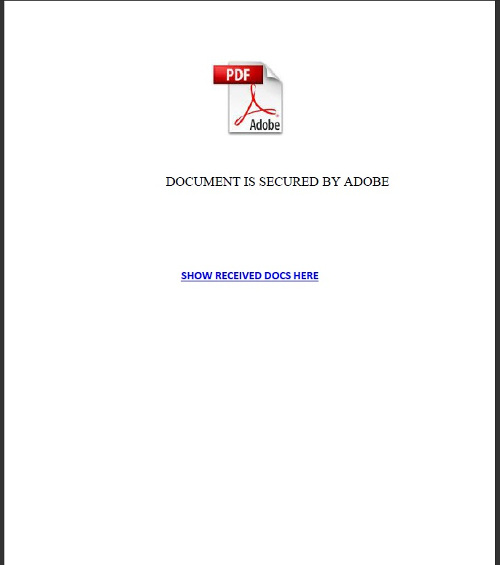PDF_PHISH.AUSEDI
Trojan.PDF.Phishing.LC (GData); Pdf.Trojan.Pdf.Wsjy (Tencent); Trojan.PDF.Phishing.LC (BitDefender)
Windows


Threat Type: Trojan
Destructiveness: No
Encrypted: No
In the wild: Yes
OVERVIEW
Spammed via email
This Trojan arrives as an attachment to email messages spammed by other malware/grayware or malicious users.
TECHNICAL DETAILS
45,805 bytes
No
05 Jul 2017
Displays message/message boxes
Arrival Details
This Trojan arrives as an attachment to email messages spammed by other malware/grayware or malicious users.
Other Details
This Trojan presents the user a fake message tricking them to click on the following link:
- http:/{BLOCKED}.to/NXMFEA
- The above redirects to https://{BLOCKED}mosambi.com/wp-content/rss.php or https://{BLOCKED}rnational.org/css/dd/Adobe2017
NOTES:
This malware arrives in the following spammed email:

Upon execution of the file, the user is presented with a fake message tricking users them to click 'SHOW RECEIVED DOCS HERE' to redirect them to malicious sites.

However, as of this writing, the said site is inaccessible.
SOLUTION
9.850
13.514.02
05 Jul 2017
13.515.00
06 Jul 2017
Step 1
Before doing any scans, Windows XP, Windows Vista, and Windows 7 users must disable System Restore to allow full scanning of their computers.
Step 2
Close all opened browser windows
Step 3
Identify and terminate files detected as PDF_PHISH.AUSEDI
- Windows Task Manager may not display all running processes. In this case, please use a third-party process viewer, preferably Process Explorer, to terminate the malware/grayware/spyware file. You may download the said tool here.
- If the detected file is displayed in either Windows Task Manager or Process Explorer but you cannot delete it, restart your computer in safe mode. To do this, refer to this link for the complete steps.
- If the detected file is not displayed in either Windows Task Manager or Process Explorer, continue doing the next steps.
Step 4
Scan your computer with your Trend Micro product to delete files detected as PDF_PHISH.AUSEDI. If the detected files have already been cleaned, deleted, or quarantined by your Trend Micro product, no further step is required. You may opt to simply delete the quarantined files. Please check this Knowledge Base page for more information.
Did this description help? Tell us how we did.

